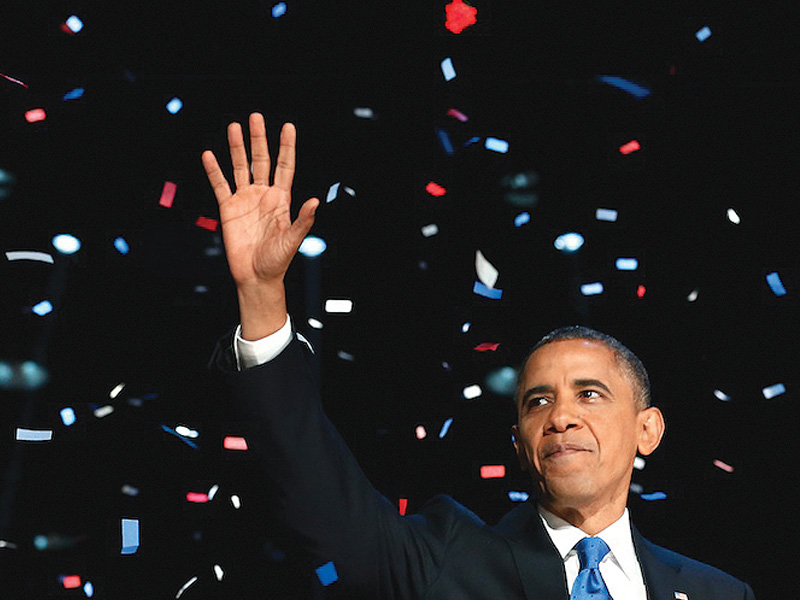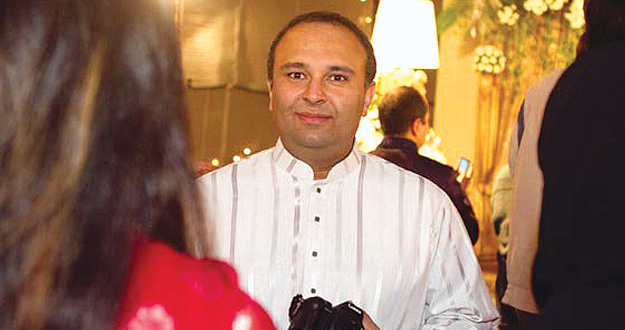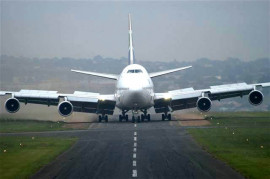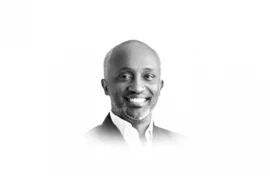
Team Obama revolutionised political interaction on social media by creating tools enabling supporters to take twitter and Facebook by storm. There were hashtags, updates on Tumblr, photos on Instagram, videos on YouTube, pinboards on Pintrest and even playlists on Spotify.
Few people know that, Rayid Ghani, a Pakistani formerly working at Chicago’s Accenture Technology Labs, was the brains behind this operation. In the ‘tech cave’ at the Chicago headquarters of the Obama Campaign, Ghani designed an entire programme based on data mining, analytics and reporting. The goal: Obama’s Presidential Re-election.

As Obama begins his second term, we speak to Ghani about his work for the campaign, the strategy he followed and what we in Pakistan, a nascent democracy, can learn from it.
“I had just decided to leave my previous job and was looking to get more involved with non-profits. The campaign approached me before I even had time to look for something else. I knew I could have more of an impact by working with the campaign for 18 months than on anything else during the time,” says Ghani, who graduated from Carnegie Mellon University in 2001 and has since worked extensively in analytics and data mining.
Ghani joined the Obama campaign in July 2011, when the US economy was tanking and most political analysts believed that the White House was the Republicans’ for the taking.
The pressure was on from day one. The campaign was already making phone calls and sending emails to people who had signed up as volunteers and donors. They were pulling up data from Obama’s first election campaign back in 2008, including several kinds of data sources which were to form the backbone of Ghani and his team’s work.

“We had a number of lists — donors, volunteers, registered voters, email addresses, Facebook likes, Twitter followers etc. The idea was to connect all this [data about people] so that we could do more effective campaigning,” he explains.
The team then organised the lists so as to spot patterns that would help them better communicate with people and, if need be, win them over to their side. “The challenge was that if I know something about a person as a volunteer, I would want to use it when talking to him or her about voting,” Ghani explains.
For instance, if the compiled data showed that a person is both a volunteer and a donor, the team would communicate with them keeping both those facts in mind and give them information relevant to both volunteering and donating.
As fascinated as I was with the idea, given my love for organisation techniques that enhance efficiency, this sounded like really intense work. “It is,” he confirms. “Towards the end, he says, the team would often spend 18 to 20 hours per day at the campaign office, including weekends.”
The hiring was done with a lot of care. “Because it was such intense work, we hired people who would be able to handle the stress. We hired a mix of people — professionals who had been working in the industry for several years, PhDs who had just finished their degrees, graduate students who were still in PhD programs. Many of the people on the team had a graduate degree in some quantitative field,” says Ghani. “One of the challenges in this situation is that you’re not paying people as much as they would get in a company. On top of that, you’re asking them to drop their lives, and move to Chicago for a short time. That’s why a lot of people who applied for these positions and got hired were younger people.”

There was plenty of work for everyone. Data was coming in by the minute, sometimes even the second, as people signed up to volunteer or donate and an automated system would add the name to the existing list. This updated information would then be used by the team that was in-charge of sending out email messages and making phone calls on behalf of the campaign. The latter was the tricky part, because this is where the campaign actually went out to interact with the people. Campaign workers and volunteers were given a pre-written script to use as a guide to make a phone call.
While those outside the campaign were following every news item on the election, the ones inside tried to ignore it as much as they could. “Obviously inside the campaign, you have better information about the state of the elections, and if you’re doing your job, you’re actually changing those numbers,” he says. “The news was often more entertaining than anything else. Every time the media would report on something our team was supposedly working on, we would chuckle because none of us were talking to the media and these articles would often just be conjecture!”
Come Election Day, every single person in the campaign office felt a level of stress that could drive a cucumber crazy! “We were trying to predict things on an individual level ie which way a person will vote and then aggregate up to the electorate. And even though we had confidence in our results, we couldn’t be 100% sure. Our work was all based on probabilities which meant that there was uncertainty in our predictions. We were hopeful that we would win but you can’t be 100% sure until it’s over,” says Ghani.

Then came the morning after and it was surreal — not least because the president himself was overcome with emotion while thanking the campaign team and the volunteers. “I was there, yes. After his speech, he walked around the office thanking people, shaking hands, and hugging the staff,” says Ghani, fondly. He pauses and I ask him how he celebrated the victory. “We all just went home and slept because we hadn’t done that in days!” he says, laughing.
Whether or not Pakistanis like to admit this, Obama is a figure who has had a lasting impact on election campaigns both in his own country and abroad, including Pakistan. For example, the Pakistan Tehreek-e-Insaf often uses the slogan “Yes We Khan”, a slightly modified version of the “Yes We Can” slogan from Obama’s 2008 election campaign. Another innovative aspect of the ’08 campaign that caught on was intelligent usage of social media, which was followed first by the PTI and then by almost all other rival political parties. I ask Ghani if he thinks data mining will catch on too.
“Efficiency is even more important in countries where money is scarce and this model is certainly applicable in ways more than one,” he says. “Every campaign has resources [money and people] and figuring out how to most efficiently allocate these is critical to winning.”
When I point out to the lack of data-driven research in Pakistan, he agrees that that makes it a little more difficult for Pakistan. “Campaign workers might have to go out and get their own data. The data is better in the US than in other countries. But everything we did from fundraising to recruiting and mobilising volunteers, to assessing voter behaviour to what ads to buy, all of that is almost equally applicable in other countries.”
In the end, he says what matters is the candidate and no amount of effort or level of efficiency can help a bad candidate win. “A candidate who doesn’t appeal to the voters of a country can’t win using all the data and analytics in the world. This type of technology only helps at the margins. A lot of the work we did eventually was successful because we had large numbers of motivated and energised volunteers who were taking our message and talking to voters and they were there because they believed in the message and in the candidate himself.”
Published in The Express Tribune, Sunday Magazine, January 20th, 2013.
Like Express Tribune Magazine on Facebook to stay informed and join the conversation.
COMMENTS (8)
Comments are moderated and generally will be posted if they are on-topic and not abusive.
For more information, please see our Comments FAQ

1731479848-0/Elon-Musk-and-Vivek-Ramaswamy-and-Donald-Trump-(1)1731479848-0-165x106.webp)















Obama and his Administration is under pressure by Israeli lobby, They can’t allow Obama to do good things for Pakistan.
No doubt Mr. Obama has very good conception about Pakistan but why his administration is continuing Drone attack. It should be stopped.
"@Hashem:Obama’s Pakistani connection DRONES AND MORE DRONES" Strongly agree with you and also Obama's connection with Pakistani leadership shall be also the same like between the master and the beggar and slave as well.....
Obama's college roommate was a Pakistani and he spent a couple of weeks in staying with their family in Pakistan prior to becoming a Senator. He also is the only President to give an exclusive interview to a Pakistani newspaper (Dawn). It's safe to say that Obama was more familiar with Pakistan prior to entering office than any US President in history - and given the Afghan war has probably greater knowledge of Afghan/Pakistan than any other President. Unfortunately - the term "familiarity breeds contempt" may apply as it's clear that Obama has a poor opinion of the leadership of Pakistan.
American politics is crap. They can get that many votes in Pakistan by buying the local zameendar / patwari or seth. Why rake brains?
I think this is not going to work in pakistan's politics ..
"In the end, he says what matters is the candidate and no amount of effort or level of efficiency can help a bad candidate win." I hope this applies to the upcoming elections in Pakistan.
Obama’s Pakistani connection
DRONES AND MORE DRONES